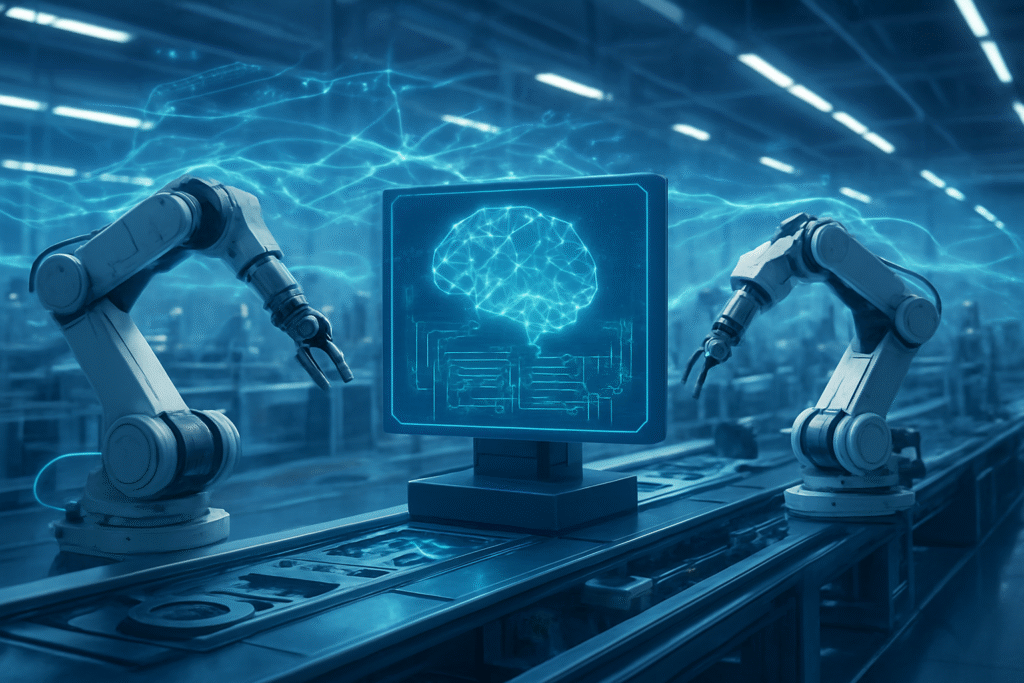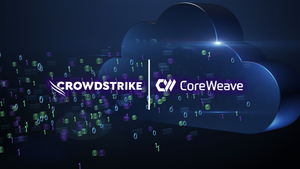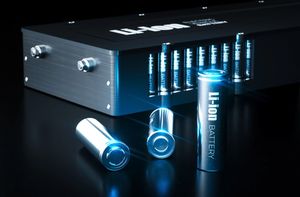
The landscape of industrial automation is undergoing a profound transformation, driven by the accelerating integration of Artificial Intelligence (AI). This paradigm shift, highlighted by industry insights as recent as November 7, 2025, promises unprecedented gains in efficiency, adaptability, and intelligent decision-making across manufacturing sectors. From optimizing complex workflows to predicting maintenance needs with remarkable accuracy, AI is poised to redefine the capabilities of modern factories and supply chains.
However, this technological frontier is not without its complexities. The International Society of Automation (ISA), a leading global organization for automation professionals, has adopted a pragmatic stance, both encouraging innovation and urging responsible, ethical deployment. Through its recent position paper, "Industrial AI and Its Impact on Automation," published on November 6, 2025, the ISA emphasizes the critical need for standards-driven pathways to ensure human safety, system reliability, and data integrity as AI systems become increasingly pervasive.
The Intelligent Evolution of Industrial Automation: From Algorithms to Generative AI
The journey of AI in industrial automation has evolved dramatically, moving far beyond the early, rudimentary algorithms that characterized initial attempts at smart manufacturing. Historically, automation systems relied on pre-programmed logic and fixed rules, offering consistency but lacking the flexibility to adapt to dynamic environments. The advent of machine learning marked a significant leap, enabling systems to learn from data patterns to optimize processes, perform predictive maintenance, and enhance quality control. This allowed for greater efficiency and reduced downtime by anticipating failures rather than reacting to them.
Today, the sector is witnessing a further revolution with the rise of advanced AI, including generative AI systems. These sophisticated models can not only analyze and learn from existing data but also generate new solutions, designs, and operational strategies. For instance, AI is now being integrated directly into Programmable Logic Controllers (PLCs) to provide predictive intelligence, allowing industrial systems to anticipate machine failures, optimize energy consumption, and dynamically adjust production schedules in real-time. This capability moves industrial automation from merely responsive to truly proactive and self-optimizing.
The benefits to robotics and automation are substantial. AI-powered robotics are no longer confined to repetitive tasks; they can now perceive, learn, and interact with their environment with greater autonomy and precision. Advanced sensing technologies, such as dual-range motion sensors with embedded edge AI capabilities, enable real-time, low-latency processing directly at the sensor level. This innovation is critical for applications in industrial IoT (Internet of Things) and factory automation, allowing robots to autonomously classify events and monitor conditions with minimal power consumption, significantly enhancing their operational intelligence and flexibility. This differs profoundly from previous approaches where robots required explicit programming for every conceivable scenario, making them less adaptable to unforeseen changes or complex, unstructured environments.
Initial reactions from the AI research community and industry experts are largely enthusiastic, acknowledging the transformative potential while also highlighting the need for robust validation and ethical frameworks. Experts point to AI's ability to accelerate design and manufacturing processes through advanced simulation engines, significantly cutting development timelines and reducing costs, particularly in high-stakes industries. However, there's a consensus that the success of these advanced AI systems hinges on high-quality data and careful integration with existing operational technology (OT) infrastructure to unlock their full potential.
Competitive Dynamics: Who Benefits from the AI Automation Boom?
The accelerating integration of AI into industrial automation is reshaping the competitive landscape, creating immense opportunities for a diverse range of companies, from established tech giants to nimble startups specializing in AI solutions. Traditional industrial automation companies like Siemens (ETR: SIE), Rockwell Automation (NYSE: ROK), and ABB (SIX: ABBN) stand to benefit significantly by embedding advanced AI capabilities into their existing product lines, enhancing their PLCs, distributed control systems (DCS), and robotics offerings. These companies can leverage their deep domain expertise and established customer bases to deliver integrated AI solutions that address specific industrial challenges.
Tech giants such as Google (NASDAQ: GOOGL), Microsoft (NASDAQ: MSFT), and Amazon (NASDAQ: AMZN) are also poised to capture a substantial share of this market through their cloud AI platforms, machine learning services, and edge computing solutions. Their extensive research and development in AI, coupled with scalable infrastructure, enable them to provide the underlying intelligence and data processing power required for sophisticated industrial AI applications. Partnerships between these tech giants and industrial automation leaders are becoming increasingly common, blurring traditional industry boundaries and fostering hybrid solutions.
Furthermore, a vibrant ecosystem of AI startups is emerging, specializing in niche areas like predictive maintenance algorithms, AI-driven quality inspection, generative AI for industrial design, and specialized AI for robotic vision. These startups often bring cutting-edge research and agile development to market, challenging incumbents with innovative, focused solutions. Their ability to rapidly iterate and adapt to specific industry needs positions them as key players in driving specialized AI adoption. The competitive implications are significant: companies that successfully integrate and deploy AI will gain substantial strategic advantages in efficiency, cost reduction, and product innovation, potentially disrupting those that lag in adoption.
The market positioning is shifting towards providers who can offer comprehensive, end-to-end AI solutions that seamlessly integrate with existing operational technology. This includes not just the AI models themselves but also robust data infrastructure, cybersecurity measures, and user-friendly interfaces for industrial operators. Companies that can demonstrate explainability and reliability in their AI systems, especially for safety-critical applications, will build greater trust and market share. This development is driving a strategic imperative for all players to invest heavily in AI R&D, talent acquisition, and strategic partnerships to maintain competitiveness in this rapidly evolving sector.
Broader Significance: A New Era of Intelligent Industry
The integration of AI into industrial automation represents a pivotal moment in the broader AI landscape, signaling a maturation of AI from experimental research to tangible, real-world impact across critical infrastructure. This trend aligns with the overarching movement towards Industry 4.0 and the creation of "smart factories," where interconnected systems, real-time data analysis, and intelligent automation optimize every aspect of production. The ability of AI to enable systems to learn, adapt, and self-optimize transforms industrial operations from merely automated to truly intelligent, offering unprecedented levels of efficiency, flexibility, and resilience.
The impacts are far-reaching. Beyond the immediate gains in productivity and cost reduction, AI in industrial automation is a key enabler for achieving ambitious sustainability goals. By optimizing energy consumption, reducing waste, and improving resource utilization, AI-driven systems contribute significantly to environmental, social, and governance (ESG) objectives. This aligns with a growing global emphasis on sustainable manufacturing practices. Moreover, AI enhances worker safety by enabling robots to perform dangerous tasks and by proactively identifying potential hazards through advanced monitoring.
However, this transformative shift also raises significant concerns. The increasing autonomy of AI systems in critical industrial processes necessitates rigorous attention to ethical considerations, transparency, and accountability. Questions surrounding data privacy and security become paramount, especially as AI systems ingest vast amounts of sensitive operational data. The potential for job displacement due to automation is another frequently discussed concern, although organizations like the ISA emphasize that AI often creates new job roles and repurposes existing ones, requiring workforce reskilling rather than outright elimination. This calls for proactive investment in education and training to prepare the workforce for an new AI-augmented future.
Compared to previous AI milestones, such as the development of expert systems or early machine vision, the current wave of AI in industrial automation is characterized by its pervasive integration, real-time adaptability, and the ability to handle unstructured data and complex decision-making. The emergence of generative AI further elevates this, allowing for creative problem-solving and rapid innovation in design and process optimization. This marks a fundamental shift from AI as a tool for specific tasks to AI as an intelligent orchestrator of entire industrial ecosystems.
The Horizon of Innovation: Future Developments in Industrial AI
The trajectory of AI in industrial automation points towards a future characterized by even greater autonomy, interconnectedness, and intelligence. In the near term, we can expect continued advancements in edge AI, enabling more powerful and efficient processing directly on industrial devices, reducing latency and reliance on centralized cloud infrastructure. This will facilitate real-time decision-making in critical applications and enhance the robustness of smart factory operations. Furthermore, the integration of AI with 5G technology will unlock new possibilities for ultra-reliable low-latency communication (URLLC), supporting highly synchronized robotic operations and pervasive sensor networks across vast industrial complexes.
Long-term developments are likely to include the widespread adoption of multi-agent AI systems, where different AI entities collaborate autonomously to achieve complex production goals, dynamically reconfiguring workflows and responding to unforeseen challenges. The application of generative AI will expand beyond design optimization to include the autonomous generation of control logic, maintenance schedules, and even new material formulations, accelerating innovation cycles significantly. We can also anticipate the development of more sophisticated human-robot collaboration paradigms, where AI enhances human capabilities rather than merely replacing them, leading to safer, more productive work environments.
Potential applications and use cases on the horizon include fully autonomous lights-out manufacturing facilities that can adapt to fluctuating demand with minimal human intervention, AI-driven circular economy models that optimize material recycling and reuse across the entire product lifecycle, and hyper-personalized production lines capable of manufacturing bespoke products at mass-production scale. AI will also play a crucial role in enhancing supply chain resilience, predicting disruptions, and optimizing logistics in real-time.
However, several challenges need to be addressed for these future developments to materialize responsibly. These include the continuous need for robust cybersecurity measures to protect increasingly intelligent and interconnected systems from novel AI-specific attack vectors. The development of universally accepted ethical guidelines and regulatory frameworks for autonomous AI in critical infrastructure will be paramount. Furthermore, the challenge of integrating advanced AI with a diverse landscape of legacy industrial systems will persist, requiring innovative solutions for interoperability. Experts predict a continued focus on explainable AI (XAI) to build trust and ensure transparency in AI-driven decisions, alongside significant investments in workforce upskilling to manage and collaborate with these advanced systems.
A New Industrial Revolution: Intelligent Automation Takes Center Stage
The integration of AI into industrial automation is not merely an incremental upgrade; it represents a fundamental shift towards a new industrial revolution. The key takeaways underscore AI's unparalleled ability to drive efficiency, enhance adaptability, and foster intelligent decision-making across manufacturing and operational technology. From the evolution of basic algorithms to the sophisticated capabilities of generative AI, the sector is witnessing a profound transformation that promises optimized workflows, predictive maintenance, and significantly improved quality control. The International Society of Automation's (ISA) dual stance of encouragement and caution highlights the critical balance required: embracing innovation while prioritizing responsible, ethical, and standards-driven deployment to safeguard human safety, system reliability, and data integrity.
This development's significance in AI history cannot be overstated. It marks a transition from AI primarily serving digital realms to becoming an indispensable, embedded intelligence within the physical world's most critical infrastructure. This move is creating intelligent factories and supply chains that are more resilient, sustainable, and capable of unprecedented levels of customization and efficiency. The ongoing convergence of AI with other transformative technologies like IoT, 5G, and advanced robotics is accelerating the vision of Industry 4.0, making intelligent automation the centerpiece of future industrial growth.
Looking ahead, the long-term impact will be a redefinition of industrial capabilities and human-machine collaboration. While challenges such as high initial investment, data security, and workforce adaptation remain, the trajectory is clear: AI will continue to permeate every layer of industrial operations. What to watch for in the coming weeks and months includes further announcements from major industrial players regarding AI solution deployments, the release of new industry standards and ethical guidelines from organizations like the ISA, and continued innovation from startups pushing the boundaries of what AI can achieve in real-world industrial settings. The journey towards fully intelligent and autonomous industrial ecosystems has truly begun.
This content is intended for informational purposes only and represents analysis of current AI developments.
TokenRing AI delivers enterprise-grade solutions for multi-agent AI workflow orchestration, AI-powered development tools, and seamless remote collaboration platforms.
For more information, visit https://www.tokenring.ai/.





